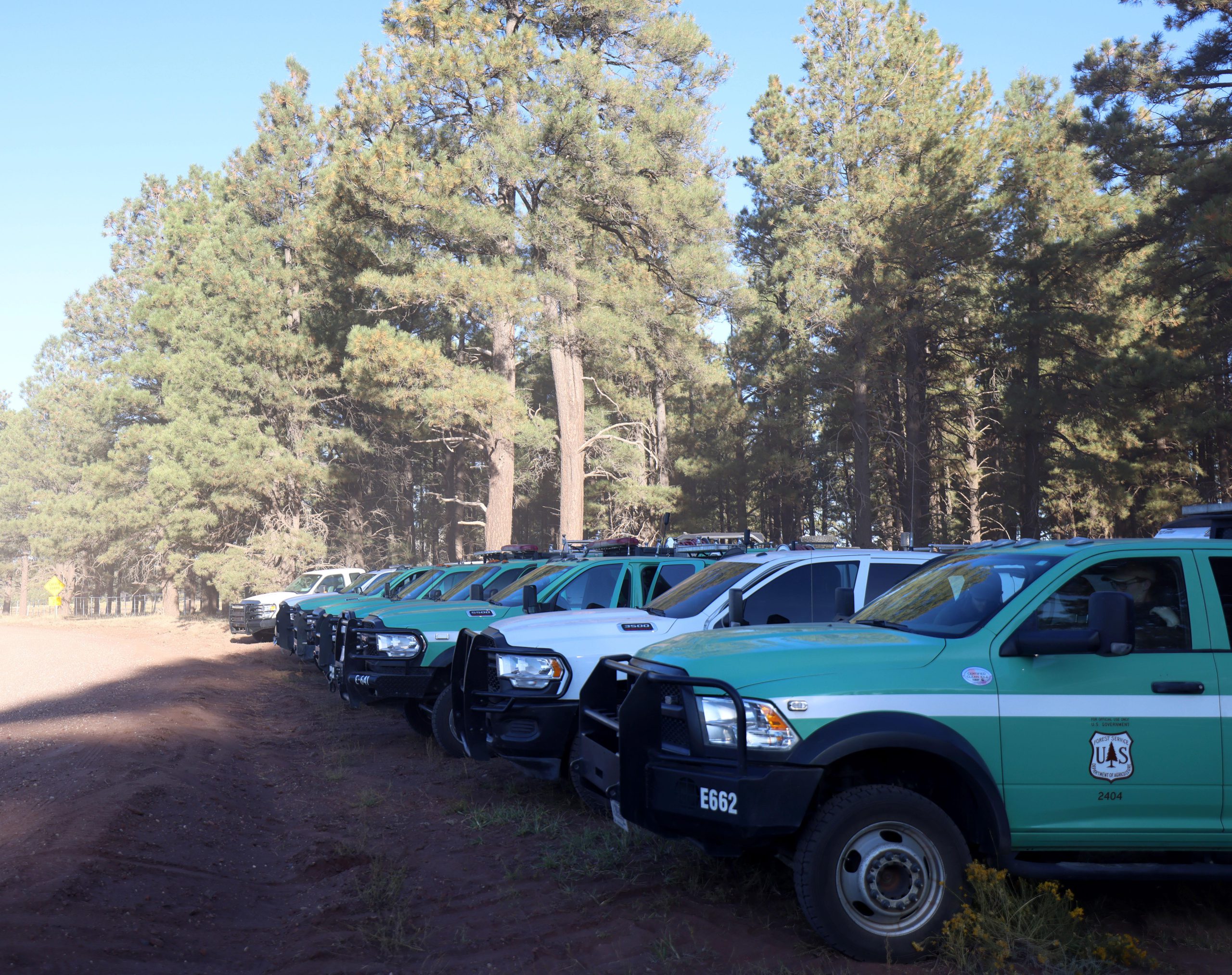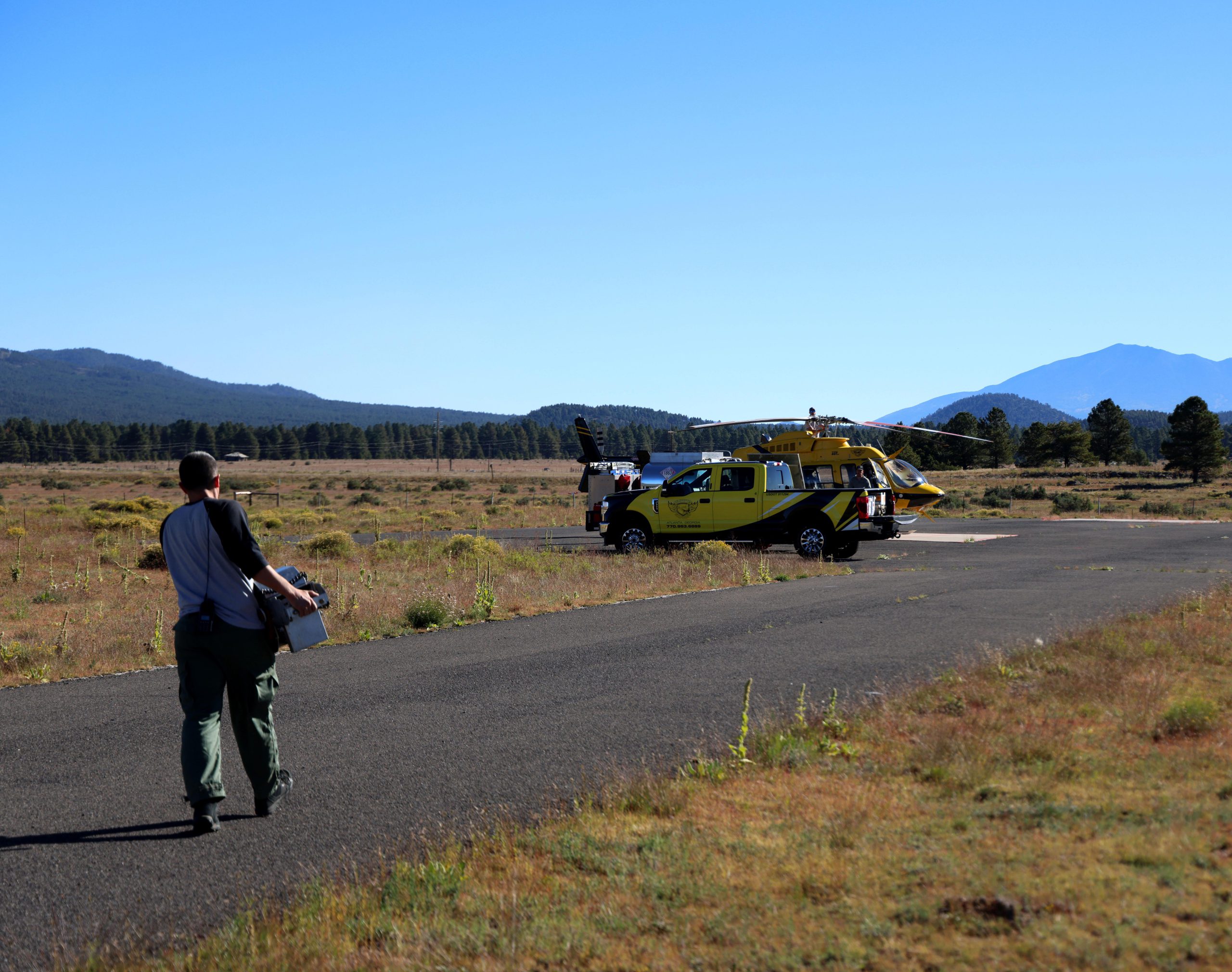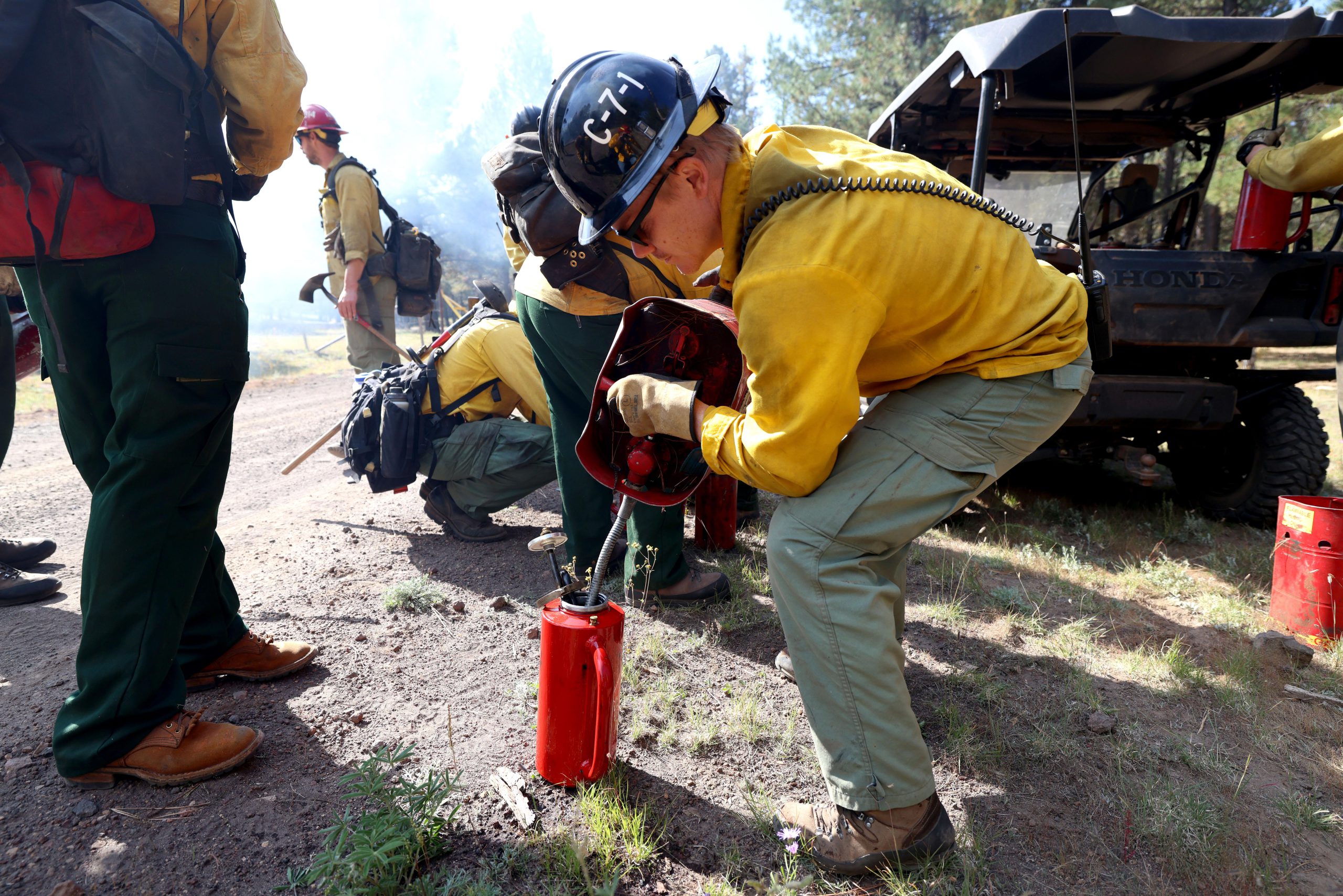Indianz.Com > News > Cronkite News: Prescribed burn projects protect federal forest lands
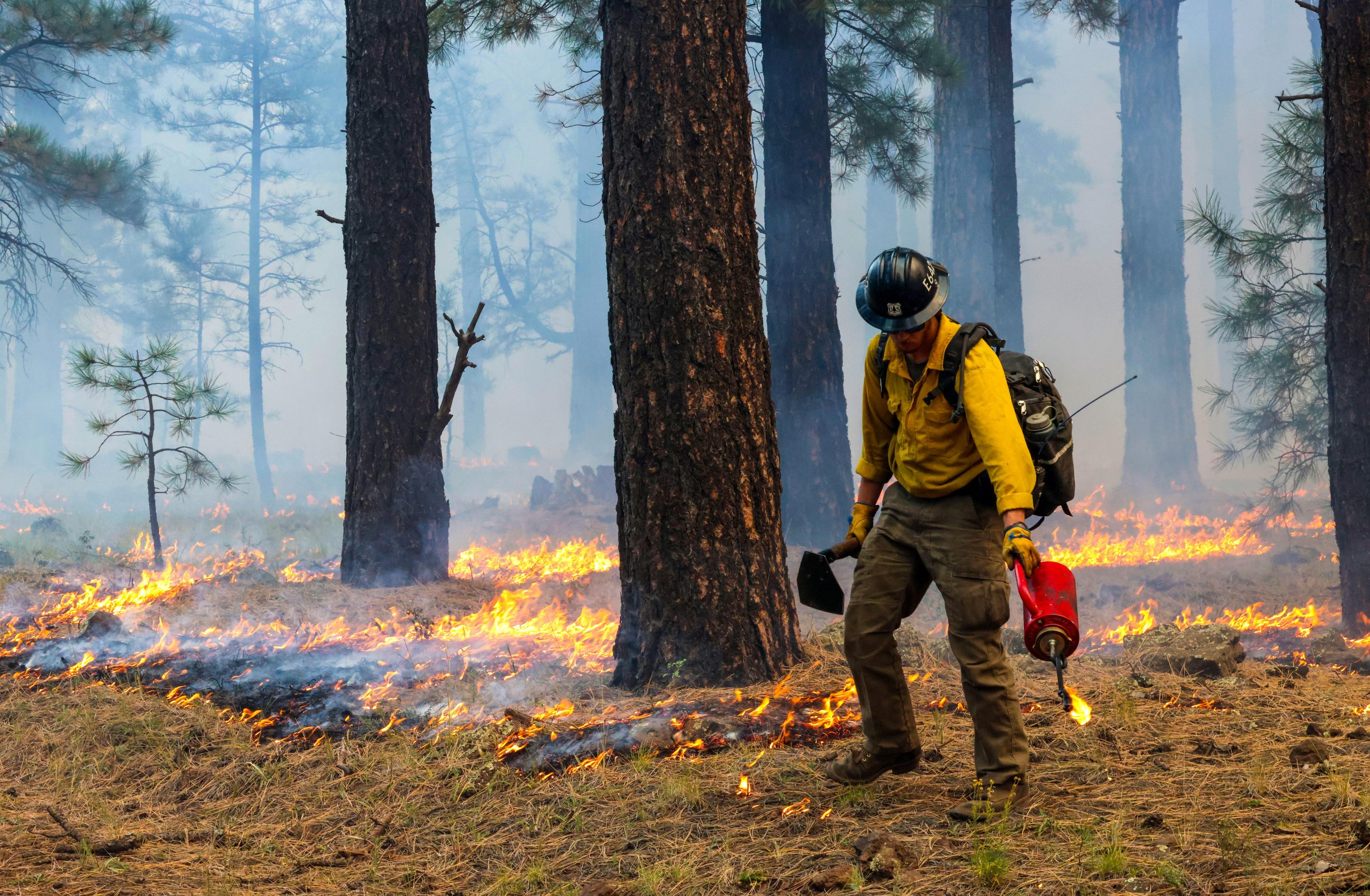
Fighting fire with fire: How prescribed burns protect forests in northern Arizona
Monday, November 6, 2023
Cronkite News
WILLIAMS — It was just before 8 a.m. on a clear fall day, when trucks carrying fire crews barreled down dirt roads into Kaibab National Forest.
Shortly after, the crews began to set over 2,300 acres of the ponderosa pine ecosystem ablaze.
The Kendrick Prescribed Fire Project was one of the first of many prescribed burns this fall and winter throughout Arizona with the goal of protecting forest lands and surrounding communities from the threat of potential catastrophic wildfires.
The prescribed burns in Kaibab National Forest are part of the U.S. Forest Service’s 10-year wildfire crisis strategy, which aims to combat wildfires in high-risk forest landscapes.
The strategy began in January 2022 as a response to the growing threat of wildfires in the West over the past 20 years due to climate change, accumulating fuels and development. It emphasizes the restoration of fire-adapted ecosystems, which rely on regular fire exposure to stay healthy.
In other words, the Forest Service aims to fight fire with fire.
As part of the Inflation Reduction Act passed in 2022, the Forest Service will receive $5 billion over 10 years, including $1.8 billion that will be used to increase forest treatments in 11 new landscapes across Western states. Those treatments include prescribed burns.
Preventing catastrophic wildfires
Prescribed burns are a wildfire prevention method that involves burning an area of land in a controlled manner in order to minimize the risk of future catastrophic wildfires.
“The objective of many of these prescribed fires is to reduce forest fuels in the area,” said Zach Boness, burn boss for the prescribed burns in Kaibab National Forest. “We live in a fire-dependent ecosystem in northern Arizona, and so fire is part of how these trees remain healthy, how the forest remains healthy.”
“Forest fuels” refer to anything in the forest that can burn, including dead plants, dead trees, built-up leaves and pine needles. If these materials aren’t burned away in a controlled manner they can build up and become fuel for dangerous wildfires, causing them to spread quickly and burn longer, making it difficult for fire crews to contain a wildfire once it starts.
In areas like the Kaibab forest, wildfires are often started by lightning strikes. When there is a lot of fuel on the forest floor, the fires can spread quickly.
Areas that have been pre-burned, though, don’t burn as intensely and often won’t burn at all since the forest fuels have already been burned off, according to Bob Blasi, a Kaibab National Forest fire information officer.
“A raging fire headed straight towards a pre-treated area will usually just go and drop,” Blasi said. “Wildfires can stop dead in their tracks, literally, when they hit a pre-treated piece of ground like this.”
According to Blasi, once a piece of land has burned, it likely won’t burn again for another 10 to 15 years.
“We do have empirical evidence that speaks to the effectiveness of these prescribed fires and other fuels treatments in slowing down and allowing us to be more successful when fire suppression is required,” Boness said.
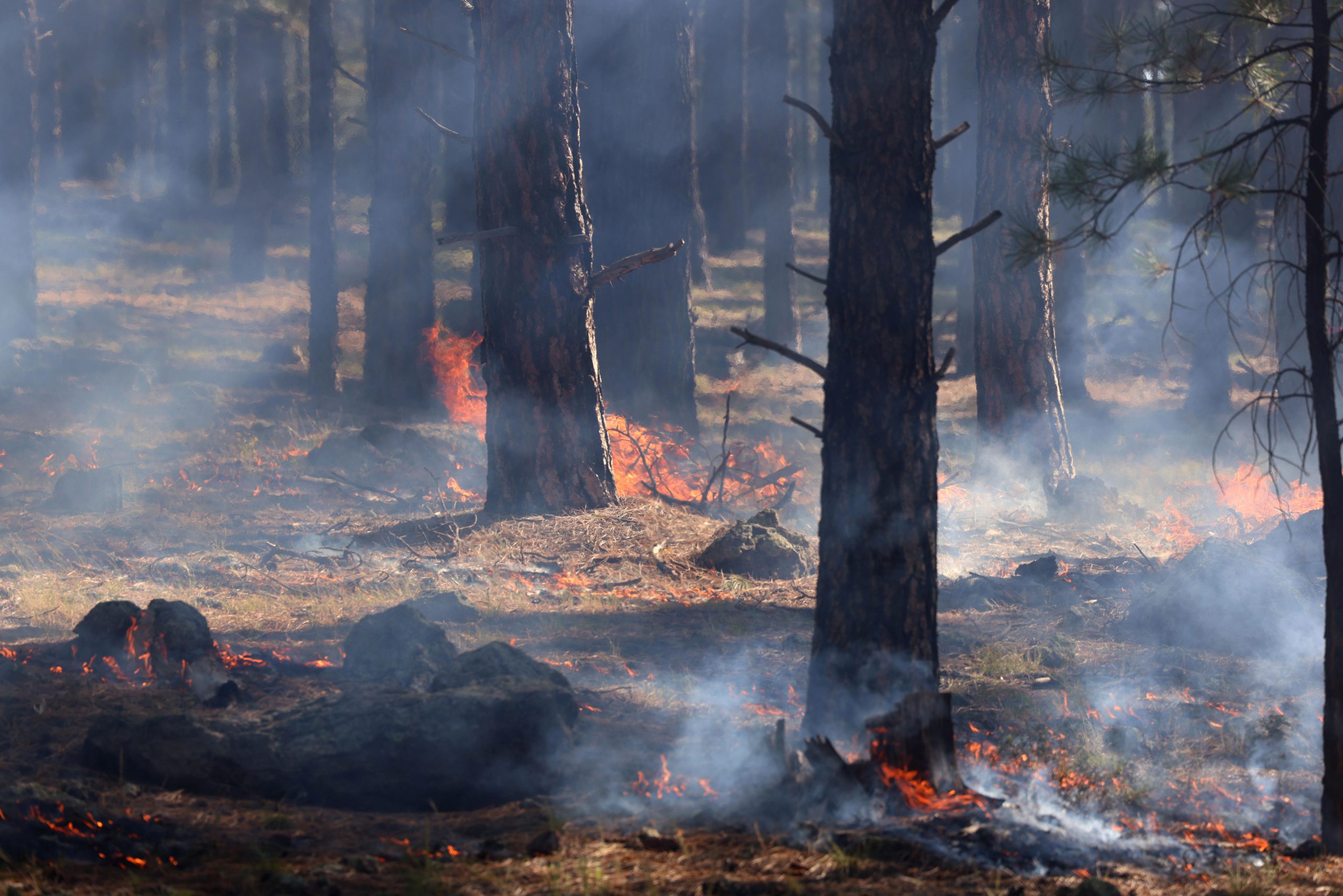
Environmental benefits
The ponderosa pine forests in northern Arizona rely on regular fire exposure to encourage biodiversity.
“When you don’t have fires frequently, then the forests get very dense,” said Andrea Thode, a professor of fire ecology and fire science in the School of Forestry at Northern Arizona University. “The trees are very close together, they don’t grow in diameter and they don’t get a lot bigger.”
When there is an excess amount of trees, the amount of forest fuels on the ground increases, making it difficult for native plant species to flourish. Additionally, when the canopy of trees is thicker, less sunlight can reach the ground to encourage photosynthesis.
Where plants struggle to grow, wildlife struggles to live. Species such as elk rely on the forbs, grasses and shrubs that grow in the ponderosa pine forests, but when forests are dense, they aren’t able to access their food supply.
Prescribed burns help manage forest density and burn off the build-up of fuels on the ground, allowing for more plants to grow. Additionally, when a prescribed fire burns through an area and blackens the trunks of trees, it leaves behind ash rich in minerals like phosphorus and nitrogen, Thode said. These minerals then soak into the soil on the ground and boost the plant growth.

The process of prescribed burns
These burns are planned months ahead of time. Early aspects of planning include organizing crews, planning burn locations, developing prescriptions, organizing permits and informing the public.
“There’s more to it than just a bunch of cavemen dragging drip torches around,” Blasi said. “It’s a very detailed organization, and it requires a lot of experience level from the top all the way to the bottom.”
Specialists also develop a burn plan, or “prescription.” This prescription takes into account weather, environmental risks and location to determine the best conditions for a burn.
Then, crews head to the location to begin preparing. They prepare bulldozer lines, which are clear areas that act as barriers for a particular burn, and they clear out some of the harder-to-remove excess fuels with saws so that the burns are easier to control.
While plans are determined ahead of time, they are often subject to change due to the unpredictability of factors like weather and humidity.
“We’re prepping right up until the day of, making sure we have the resources that are needed and getting folks in place for all that,” Boness said.
Note: This story originally appeared on Cronkite News. It is published via a Creative Commons license. Cronkite News is produced by the Walter Cronkite School of Journalism and Mass Communication at Arizona State University.
Search
Filed Under
Tags
More Headlines
Native America Calling: Balancing economic safety and development for payday loan businesses on tribal land
‘A step in the wrong direction’: President Trump’s funding freeze shakes up Indian Country
Native America Calling: From road access to ICE immigration raids, tribes are asserting sovereignty
President Trump’s ‘love’ for Lumbee Tribe only goes so far in fight for federal recognition
NAFOA: 5 Things You Need to Know this Week (January 27, 2025)
Chuck Hoskin: Cherokee Nation reaches trust settlement with United States
Native America Calling: Native American representation in television news
Native America Calling: Native youth building the foundation for future leadership
Republicans forced to defend record on Indian issues at start of new Congress
Native America Calling: How it started, how it’s going with Donald Trump
President Trump targets Indian education in first round of executive actions
House Committee on Natural Resources convenes for first meeting
Alaska Beacon: Republicans oppose President Trump on Native name change
Native America Calling: Is the Antiquities Act an antique?
Austin Kaus: The world is less funny with the passing of ‘The Indian’ Terry Ree
More Headlines
‘A step in the wrong direction’: President Trump’s funding freeze shakes up Indian Country
Native America Calling: From road access to ICE immigration raids, tribes are asserting sovereignty
President Trump’s ‘love’ for Lumbee Tribe only goes so far in fight for federal recognition
NAFOA: 5 Things You Need to Know this Week (January 27, 2025)
Chuck Hoskin: Cherokee Nation reaches trust settlement with United States
Native America Calling: Native American representation in television news
Native America Calling: Native youth building the foundation for future leadership
Republicans forced to defend record on Indian issues at start of new Congress
Native America Calling: How it started, how it’s going with Donald Trump
President Trump targets Indian education in first round of executive actions
House Committee on Natural Resources convenes for first meeting
Alaska Beacon: Republicans oppose President Trump on Native name change
Native America Calling: Is the Antiquities Act an antique?
Austin Kaus: The world is less funny with the passing of ‘The Indian’ Terry Ree
More Headlines
